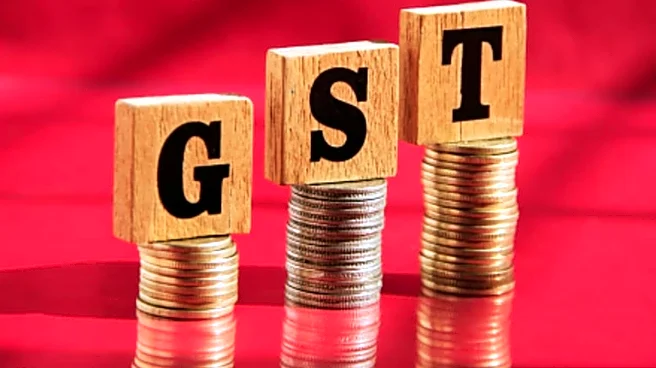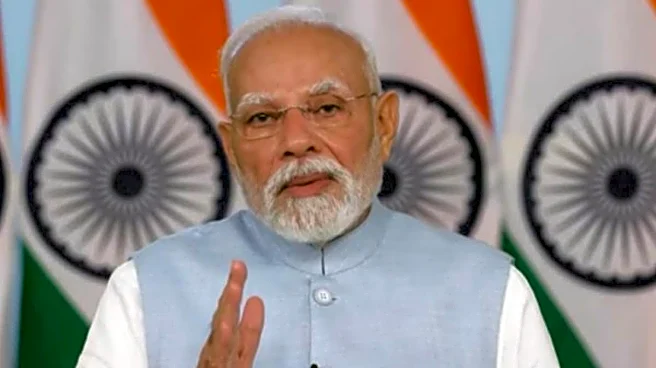The Goods and Services Tax (GST), introduced in India in 2017 amid much fanfare, was intended to revolutionise the nation’s fragmented indirect tax system into a seamless, unified framework. Billed as a game-changer
for economic integration, it promised to eliminate cascading taxes, boost compliance through digital means, and foster a single national market. However, the reality has been more nuanced, with persistent complaints about complex rate structures, burdensome compliance requirements, and uneven revenue distribution between the Centre and the states.
Now, in a bold move that signals the dawn of what Finance Minister Nirmala Sitharaman has dubbed “GST 2.0”, the 56th GST Council meeting has approved a sweeping overhaul, condensing the existing four-tier slab system into a primarily two-rate structure of 5 per cent and 18 per cent, alongside a new 40 per cent slab for sin goods. These changes, set to take effect from September 22, 2025, represent the most significant reform since GST’s inception, aiming to simplify taxation, stimulate consumption, and address long-standing inequities.
The Council’s decisions, announced on September 3, 2025, mark a departure from the incremental adjustments of recent years. The new structure eliminates the 12 per cent and 28 per cent slabs for most goods and services, reclassifying them under 5 per cent or 18 per cent. Essential items and those consumed by the masses, such as hair oil, small cars and motorcycles up to 350cc, buses, trucks, and ambulances, will see reductions in rates from 18 per cent to lower, providing direct relief to consumers and industries alike. This is complemented by zero-rating individual health insurance policies, a move that could make healthcare more accessible amid rising medical costs.
Construction materials will also benefit from lower rates, potentially invigorating the real estate sector and creating jobs in a labour-intensive industry. On the flip side, sin goods like tobacco, gutkha, pan masala, and aerated beverages will attract a punitive 40 per cent rate, reflecting a moralistic approach to taxation that discourages harmful consumption while bolstering revenues.
This rationalisation is not merely technical; it is a strategic response to India’s post-pandemic economic challenges. With private consumption lagging despite robust GDP growth, the government is betting on these cuts to unleash pent-up demand, particularly among the middle and lower-middle classes, who have borne the brunt of inflation.
By slashing rates on everyday essentials and transport vehicles, the reform could inject liquidity into households, encouraging spending on goods that drive manufacturing and services. Industry bodies have hailed it as a “Diwali bonanza”, predicting a surge in auto sales and FMCG volumes. For farmers and rural economies, reduced taxes on agricultural inputs and vehicles like tractors (now at 18 per cent) could lower production costs, enhancing competitiveness in a sector still reeling from erratic monsoons and global commodity volatility. In the health domain, exempting individual insurance from GST addresses a critical gap, potentially increasing insurance penetration from its current low levels and reducing out-of-pocket expenses that push millions into poverty annually.
Yet, the reform’s opinionated edge lies in its unapologetic embrace of a simplified, pro-growth model that prioritizes efficiency over perfection. Critics who have long decried the multi-slab system’s complexity, breeding disputes, evasion, and lobbying, will find vindication here. The old structure, with its exemptions and cesses, often resembled a patchwork quilt rather than a coherent policy, leading to classification battles that clogged courts and eroded trust.
By streamlining to two main rates, the Council is tacitly admitting that simplicity is key to compliance, potentially raising the GST-to-GDP ratio from its stagnant 6-7 per cent. This aligns with global best practices, where successful VAT systems like those in Singapore or New Zealand thrive on minimal slabs. Moreover, the 40 per cent sin tax slab introduces a progressive element to an otherwise regressive indirect tax regime, targeting luxuries and demerits without broadly burdening the poor. It’s a clever fiscal manoeuvre: revenues from sin goods could offset losses from rate cuts, ensuring the Centre’s deficit targets remain intact while states receive assured compensation.
However, this optimism must be tempered with realism. The reform’s timing, just ahead of festive seasons and elections, reeks of political opportunism. Opposition leaders, including former Finance Minister P Chidambaram, have welcomed the changes but questioned why such relief wasn’t extended earlier, implying it’s a vote-buying tactic rather than genuine policy innovation. Indeed, with assembly polls looming in key states, the government’s narrative of a “tax bonanza for the common man” serves to counter anti-incumbency sentiments fuelled by unemployment and price rises.
But beyond politics, economic risks loom. Revenue implications are murky; while the Finance Minister asserts a “unanimous” decision with neutral net impact, we should expect short-term shortfalls, especially if consumption doesn’t rebound as hoped. States, already grumbling about the lapsed compensation cess post-2022, may face fiscal strain if the 40 per cent slab doesn’t deliver expected windfalls. Federal tensions, a perennial GST sore point, could intensify if smaller states feel shortchanged in revenue sharing.
Furthermore, the reform glosses over deeper structural flaws. Petroleum products, alcohol, and real estate, major revenue sources, remain outside GST’s ambit, perpetuating distortions and denying input tax credits that could lower fuel prices, a chronic inflationary driver. Including them would truly unify the tax base, but political sensitivities around state autonomy make it a non-starter.
Compliance easing, though mentioned in passing with promises of simplified returns and automated reconciliations, lacks granular details in the announcements. Small businesses, the backbone of India’s economy, have suffered under GST’s digital rigours; without robust support for digital literacy and infrastructure, the new system risks alienating them further. The digital divide exacerbates this: urban enterprises with tech-savvy will adapt swiftly, while rural and informal sectors lag, widening economic inequalities.
In the broader macroeconomic canvas, GST 2.0 intersects with India’s ambitions to become a $5 trillion economy. By fostering a predictable tax environment, it could attract foreign investment wary of India’s regulatory maze. Lower rates on EVs and green tech (reclassified under 5 per cent or 18 per cent) align with sustainability goals, potentially accelerating the shift from fossil fuels.
Yet, for sustained impact, the reform must be paired with direct tax reforms to reduce reliance on indirect levies, which disproportionately hit the poor. India’s tax-to-GDP ratio, at around 18 per cent, lags peers; broadening the base through better enforcement, not just rate tweaks, is essential. The Council’s focus on automation via the GST Network is promising, but past glitches remind us that technology alone isn’t a panacea; human-centric governance is crucial.
The moral underpinnings of this reform also deserve scrutiny. By hiking sin taxes to 40 per cent, the government is wielding fiscal policy as a behavioural nudge, echoing paternalistic traditions in Indian taxation. This could curb tobacco use, saving healthcare costs, but it raises ethical questions: should taxes moralise consumption, or merely fund public goods? For the affluent, 40 per cent on luxuries is negligible; for addicts in lower strata, it might fuel black markets.
As reactions pour in, from jubilant stock markets—auto shares jumping on rate cuts—to cautious optimism from economists, the reform’s legacy will hinge on implementation. The upcoming rollout gives businesses breathing room to adjust inventories and pricing, but transitional chaos, like in 2017, is possible. The government’s strategy, timing the changes post-monsoon for economic uplift, betrays a calculated optimism, but global headwinds like trade wars or oil shocks could derail it.
Ultimately, GST 2.0 is a commendable pivot toward maturity, rectifying the original sin of overcomplication while injecting fiscal stimulus. It reaffirms GST’s role as a pillar of PM Modi’s economic legacy, blending reformist zeal with pragmatic populism. Yet, it remains incomplete without addressing federal frictions, inclusion gaps, exogenous exclusions and ensuring that the benefits of reform actually reach ordinary people in their daily lives.
For India, aspiring to global leadership, this reform is a milestone, not the finish line—a reminder that true fiscal transformation demands courage beyond slabs and rates, embracing equity, trust, and vision. As the nation digests these changes, one hopes they catalyse not just growth, but a fairer economic order.
Amal Chandra, author of ‘The Essential’, is a policy analyst and columnist. He tweets @ens_socialis. Views expressed in the above piece are personal and solely those of the author. They do not necessarily reflect News18’s views.

/images/ppid_59c68470-image-175851509648168094.webp)

/images/ppid_59c68470-image-175854258121684843.webp)
/images/ppid_59c68470-image-175851758053098848.webp)

/images/ppid_59c68470-image-175852505605724310.webp)
/images/ppid_59c68470-image-175852757417582211.webp)
/images/ppid_59c68470-image-175852004074654288.webp)

/images/ppid_59c68470-image-175854504468240235.webp)
